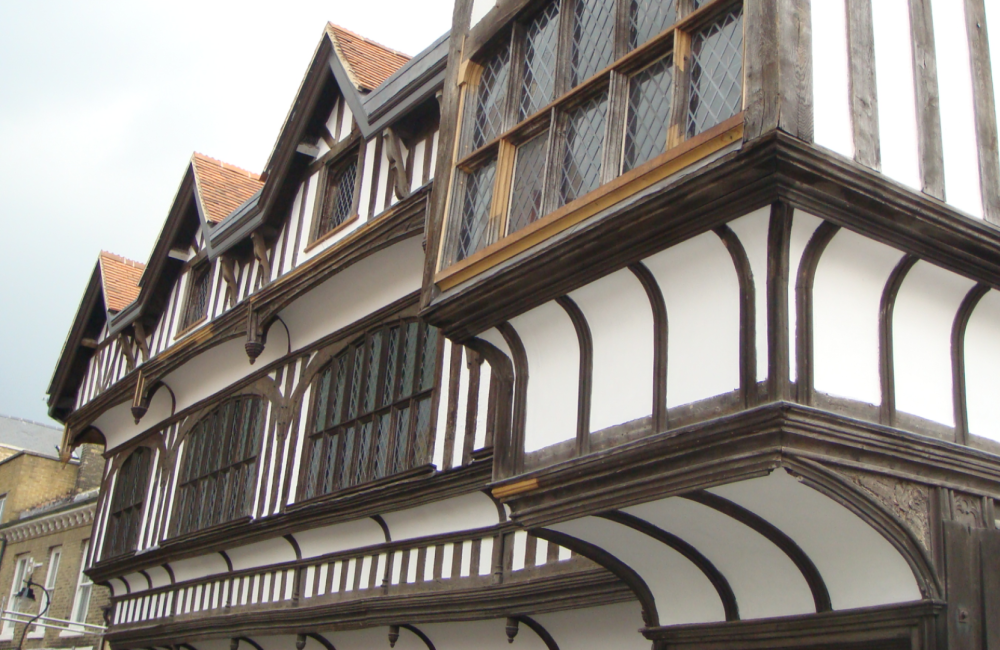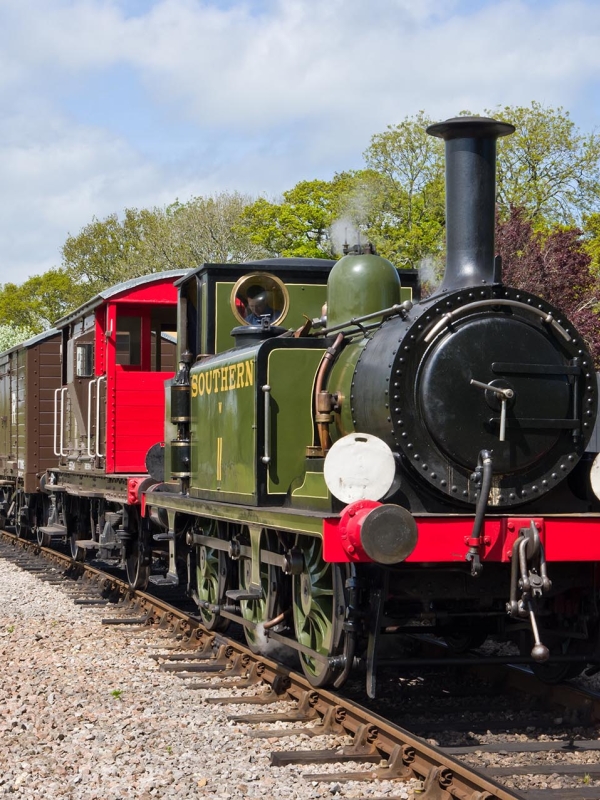Discover Southampton's Hidden History
While many Islanders will associate Southampton with shopping, theatre, and nights out – the maritime city is rich in hidden history and home to some of the oldest surviving structures in England, including a subterranean network of medieval vaults.
From the first Roman town of Clausentum on the banks of the River Itchen and Anglo-Saxon settlement of Hamwic, to the modern city we know today; Southampton’s pivotal location along the south coast and unique double tide have made the city an important location for trade, shipping, and industrialisation for hundreds of years. A former spa town, the city attracted visiting royalty such as Henry II and famous figures such as author Jane Austen, who celebrated her 18th birthday in The Dolphin Hotel which still stands on High Street today.
We’ve put together a self-led tour for you to follow, scratching beneath the surface of Southampton’s rich heritage. Coming from the Isle of Wight? Your tour begins with a journey across the Solent with Red Funnel, transporting passengers between Southampton and the Isle of Wight for over 160 years.
SOUTHAMPTON DOCKS
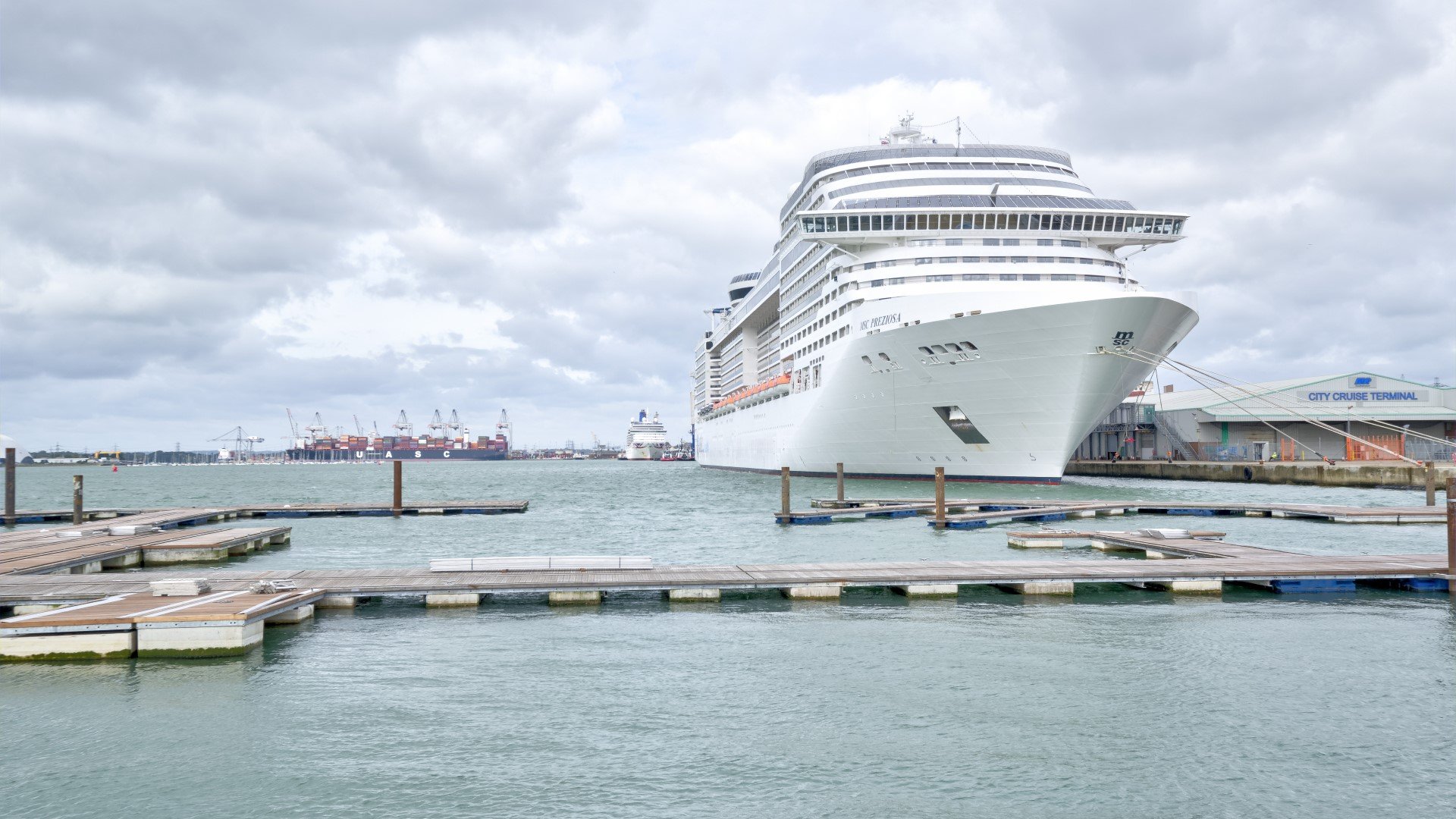
On your approach to Southampton docks, it’s easy to imagine a historic hive of maritime activity – billowing steamships (including Red Funnel paddle steamers) navigating the narrow waters, trains pulling into the port, and bustling dock workers hauling luggage and supplies. In fact, the port has long been named ‘Gateway to the World’ thanks to its shipping routes – later bolstered by the 1840 introduction of the London and South Western Railway which would connect Southampton with the capital city. Southampton has even been the base for the development of the hovercraft, flying boats, and the Supermarine Spitfire. Grand liners of the 20th century such as those of Cunard and White Star Line were based in the port - including the ill-fated RMS Titanic which departed from berth 44, now known as Ocean Dock (and sadly off-limits to visitors – unless you’re headed on a cruise, of course).
PLATFORM TAVERN
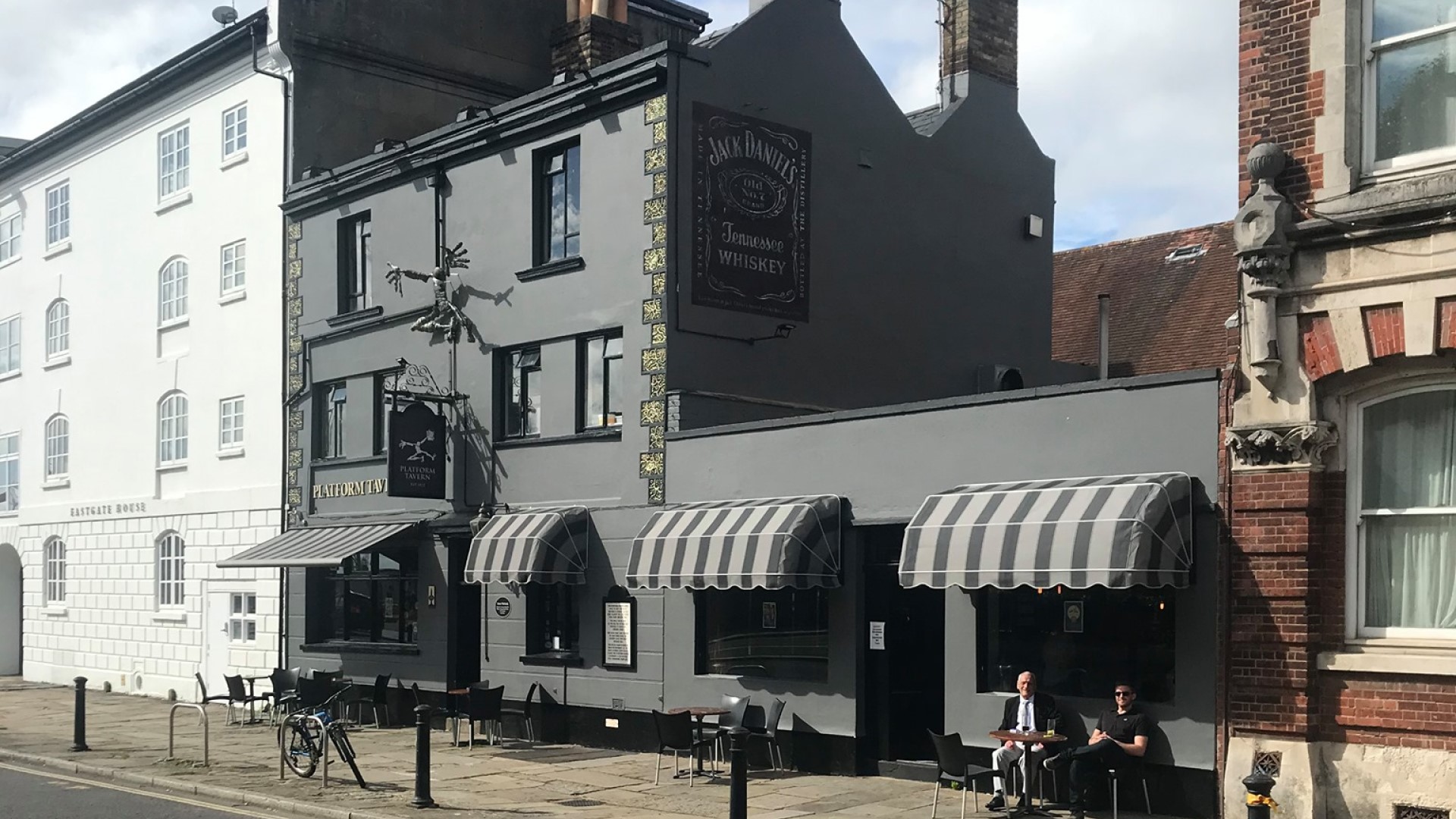
Upon exiting our Southampton Red Jet terminal, head towards the city centre, taking a right at the traffic lights. Along this road you’ll find the Platform Tavern, a characterful establishment steeped in history. Dating back to 1873, the pub would be frequented by dockers and seafarers, including some of the crew of RMS Titanic. With rooms upstairs, it was the last-known address of First-Class Steward James McGrady, with a commemorative blue plaque by the entrance. The Platform Tavern was also depicted in the 1997 blockbuster film, in the scene that saw Jack Dawson win two third-class tickets for the Titanic’s maiden voyage in a game of poker. A great spot for drinks or a bite to eat, the Platform Tavern also offers live music by night.
GOD'S HOUSE TOWER
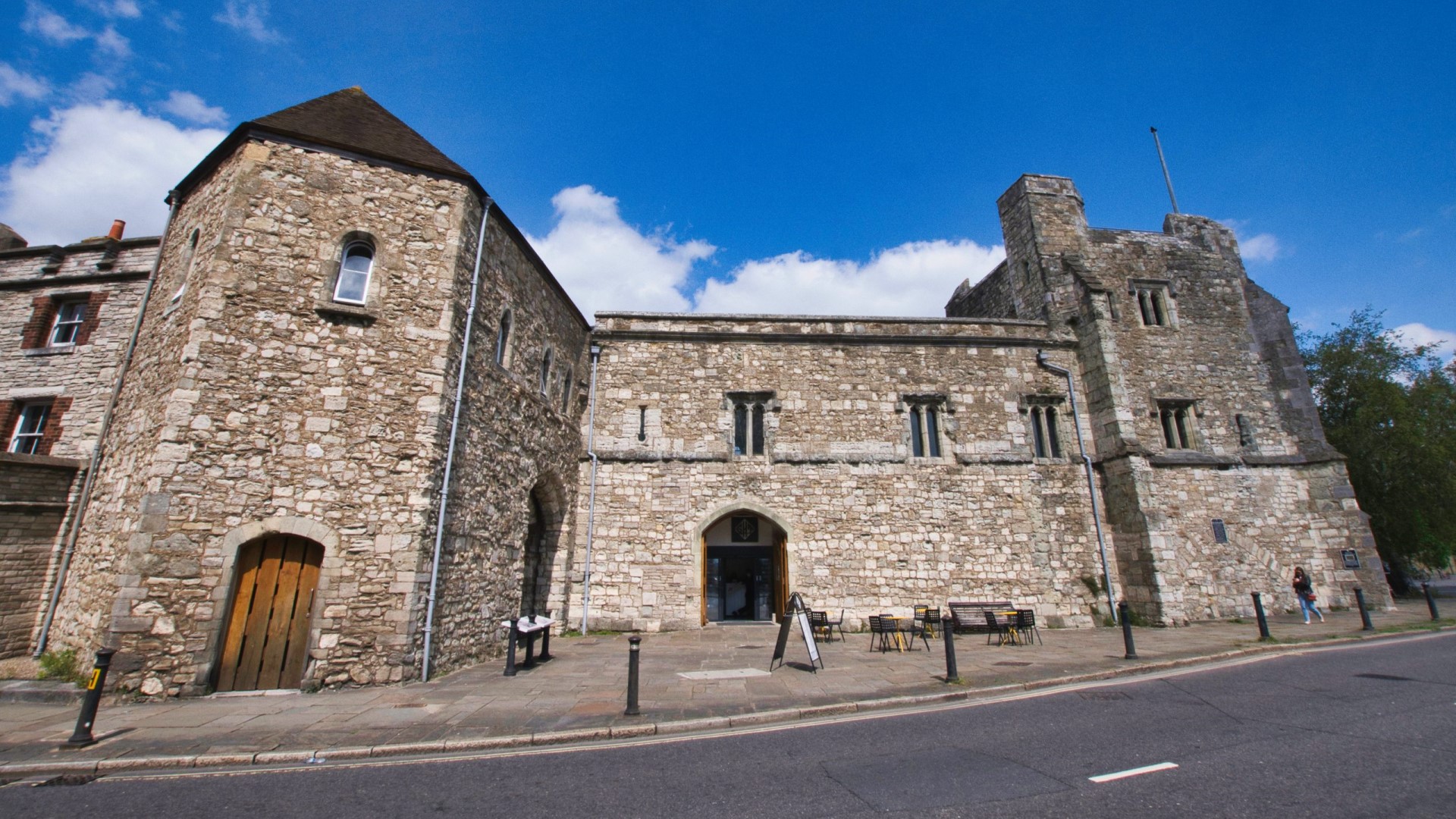
A little further along from the Platform Tavern is God's House Tower, formerly known as God's House Gate - named after a hospital that stood nearby. The 700 year old Grade I listed building was originally an artillery fortification, then utilised as a prison and renamed Gods House Gaol. Today, the heritage building is an arts space, offering immersive installations and informative exhibitions based on local and national history. Here you’ll also find GHT Café, serving up hand-roasted coffee and baked goods from local suppliers. Once refuelled for the walk, make your way back to High Street, turning left to continue straight up High Street until you reach the Bargate.
THE BARGATE
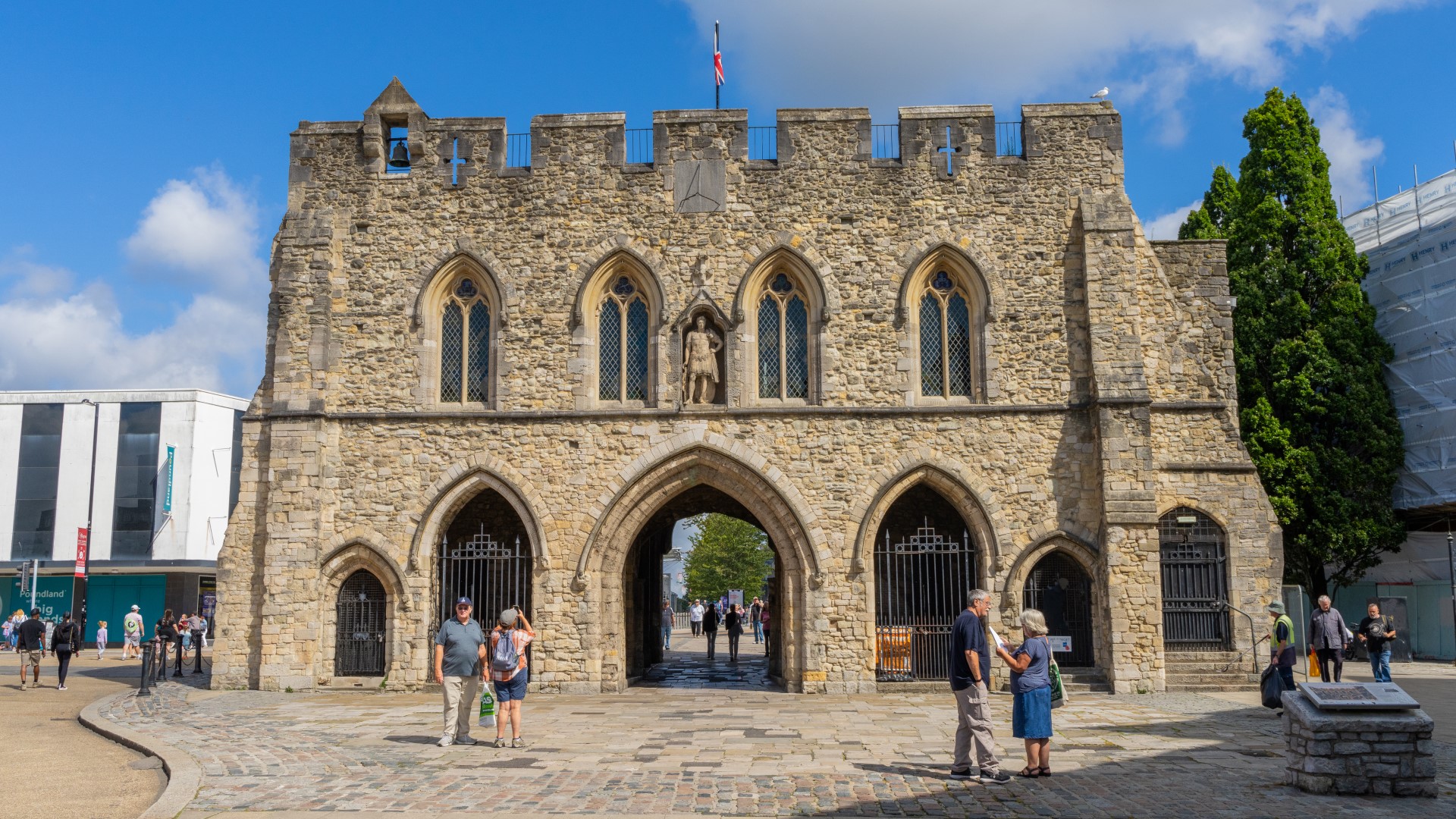
Arguably Southampton’s most iconic structure, the Bargate once formed the main entrance to the medieval walled city. This stone arch dates back to the 12th century and has seen a multitude of uses, including a prison, criminal court, and exhibition space. Incredibly, the Bargate was scheduled for demolition at the turn of the 20th century to allow for trams to navigate around, however the decision was made to separate it from the adjoining walls instead. Today the landmark is the meeting point for walking tours led by a knowledgeable and passionate team of volunteers. These guided tours also provide access to the medieval vaults below the city!
SEACITY MUSEUM
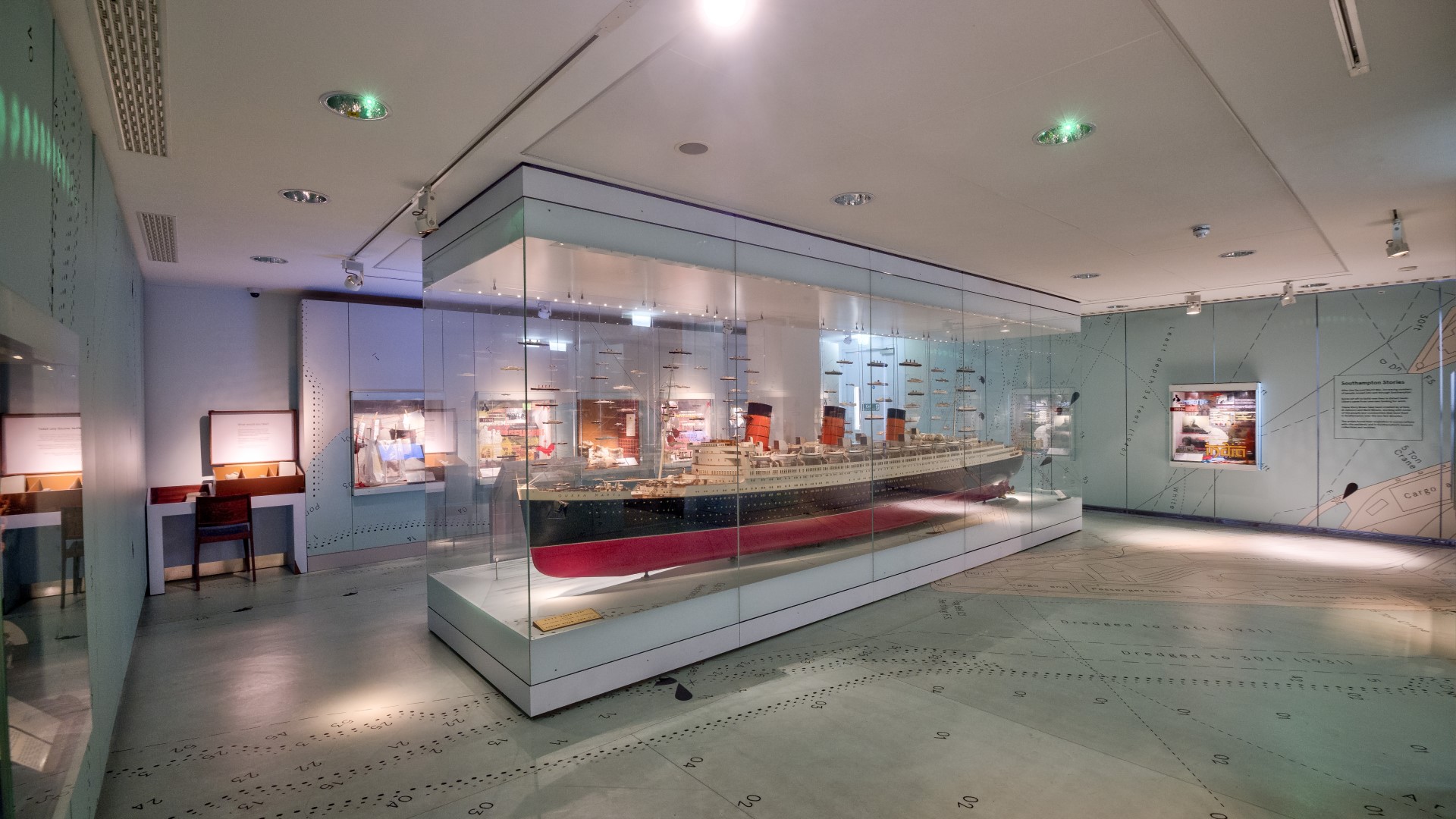
From the Bargate, head straight up the shopping precinct until you reach East Park – here you’ll find the Titanic Engineers’ Memorial, erected in 1914. Next head towards the Civic Centre (easily identified by its clock tower) to reach SeaCity Museum, housed in Southampton’s former central police station. Inside you’ll find a wealth of artefacts, a permanent Titanic exhibition with interactive features and dress-up opportunities, and fascinating insights into Southampton’s colourful history over the past 200,000 years. If you don't manage to squeeze everything in, a ticket to SeaCity Museum includes re-admission for a whole year from your visit so you can peruse at your leisure. On the way out, you’ll find a well-stocked gift shop with all manner of maritime and historical souvenirs.
THE ARCADES AND AMERICAN WALL
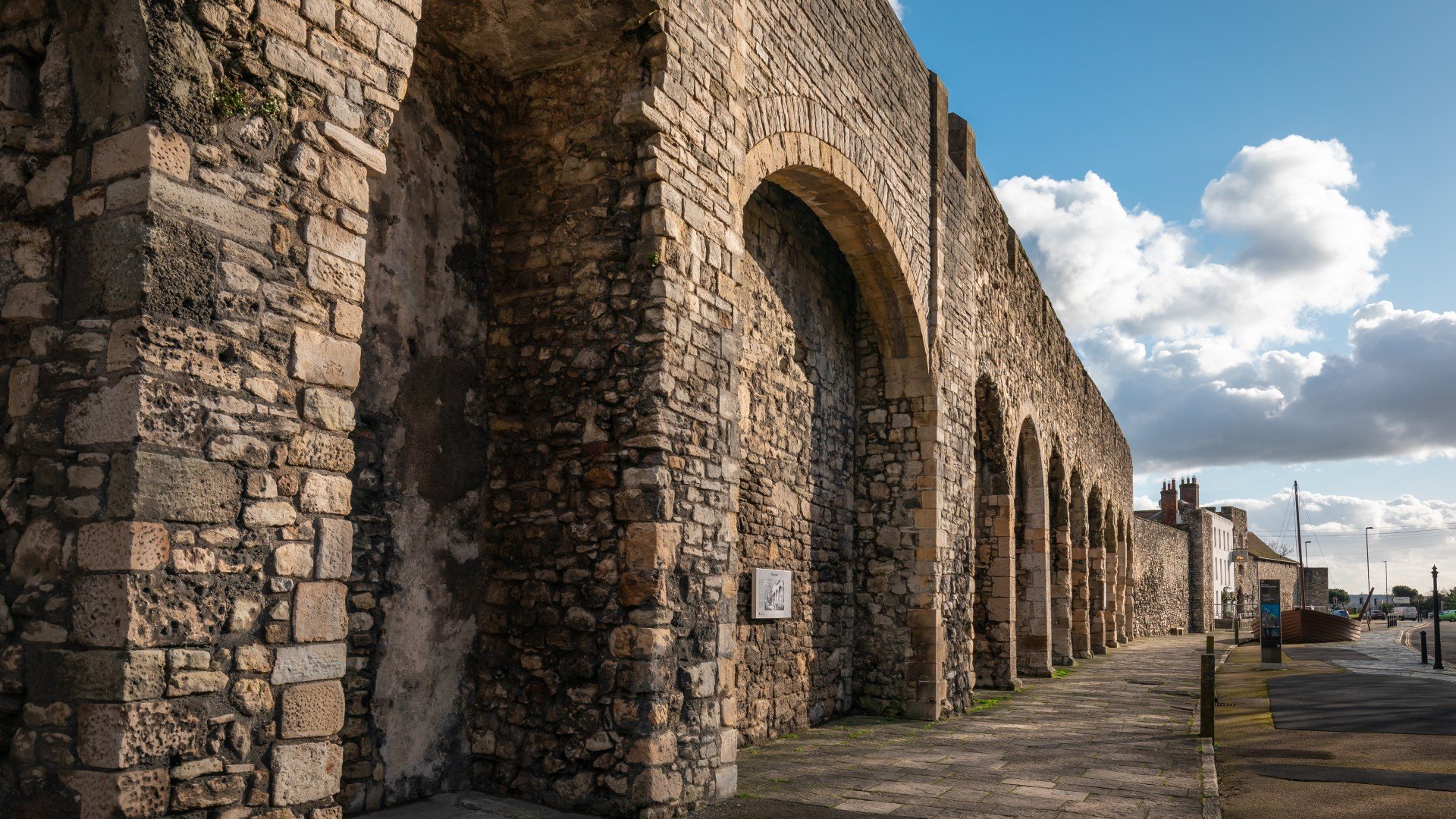
From SeaCity Museum, head down Portland Terrace until you reach the entrance to Westquay. By descending the steps, you’ll now be immersed in some of the longest stretches of Southampton’s old walls, known as The Arcades. Following a devastating raid by the French in 1338, King Edward III instructed that the medieval city should be completely enclosed to protect residents and valuable stocks such as wool and wine. The walls took around 100 years to complete, with most of the stone sourced from Isle of Wight quarries. As you pass down Western Esplanade, keep an eye out for a brick wall on the right hand side – this is known as the D-Day or American Wall, after troops carved their initials while passing through Southampton on their way to the D-Day Landings, and the etchings can still be seen. On the other side of the road, you’ll spot an opening in the stone walls for Blue Anchor Lane. Follow the lane until you come out on St Michael’s Square.
TUDOR HOUSE & GARDEN
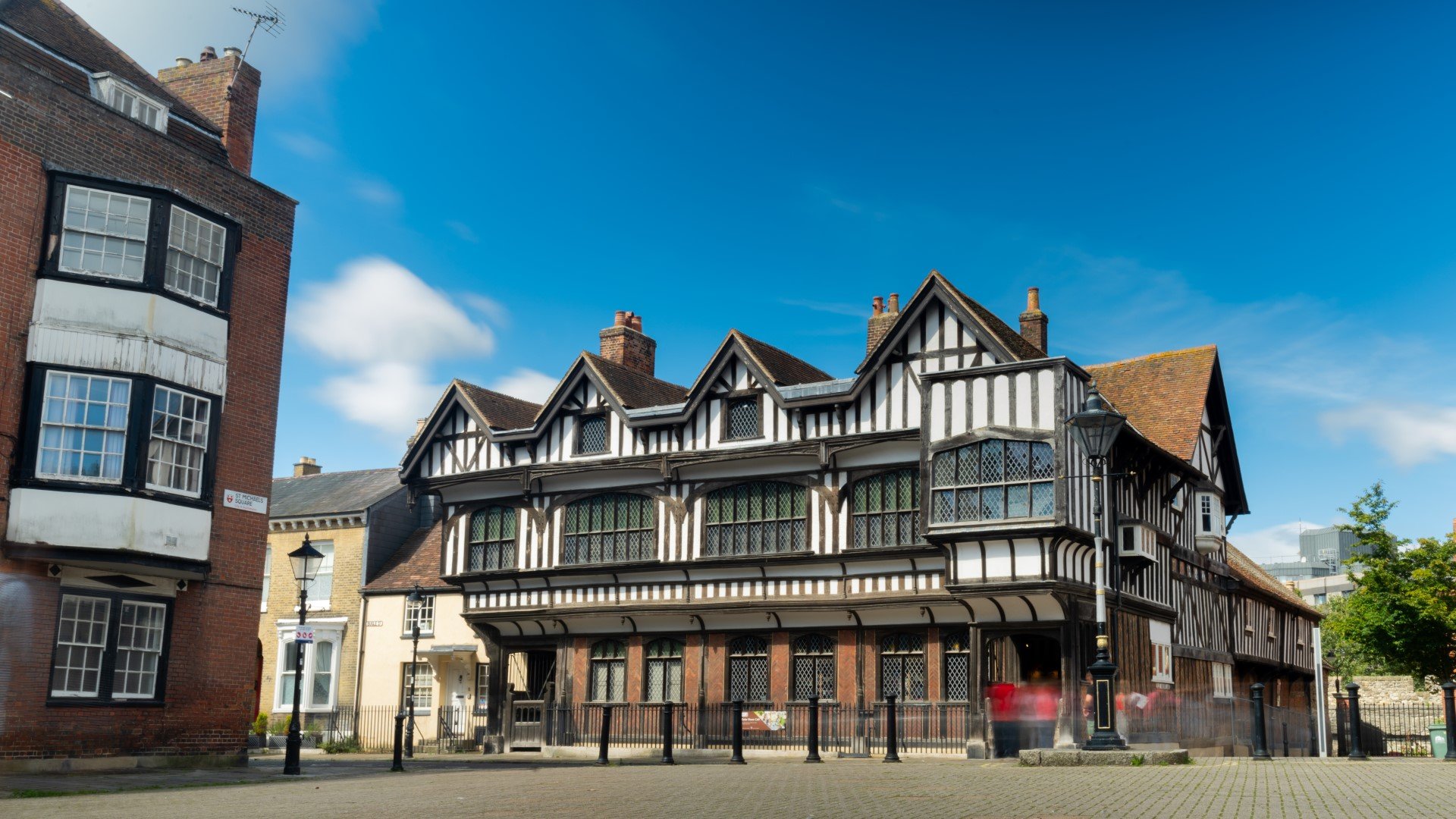
As you emerge from Blue Anchor Lane, the first sight you’ll see is St Michael's Church with its majestic spire. Dating back to 1070, the Grade I listed church is the oldest building still in use in Southampton today. To your right you’ll find Tudor House & Garden, a former 16th century dwelling comprised of three cottages. While the outside fascia might be mock-Tudor and around 100 years old, the interior is bursting with original features, artworks, and artefacts - including tableware and jewellery. If you'd rather not rush, your admission ticket to Tudor House also allows you to return for free for a whole year! The gardens are another highlight and can be a perfect suntrap for a cuppa and a cake. The gardens also provide access to the ruins of King John’s Palace, a wonderful hidden gem that pre-dates the city walls.
DANCING MAN BREWERY
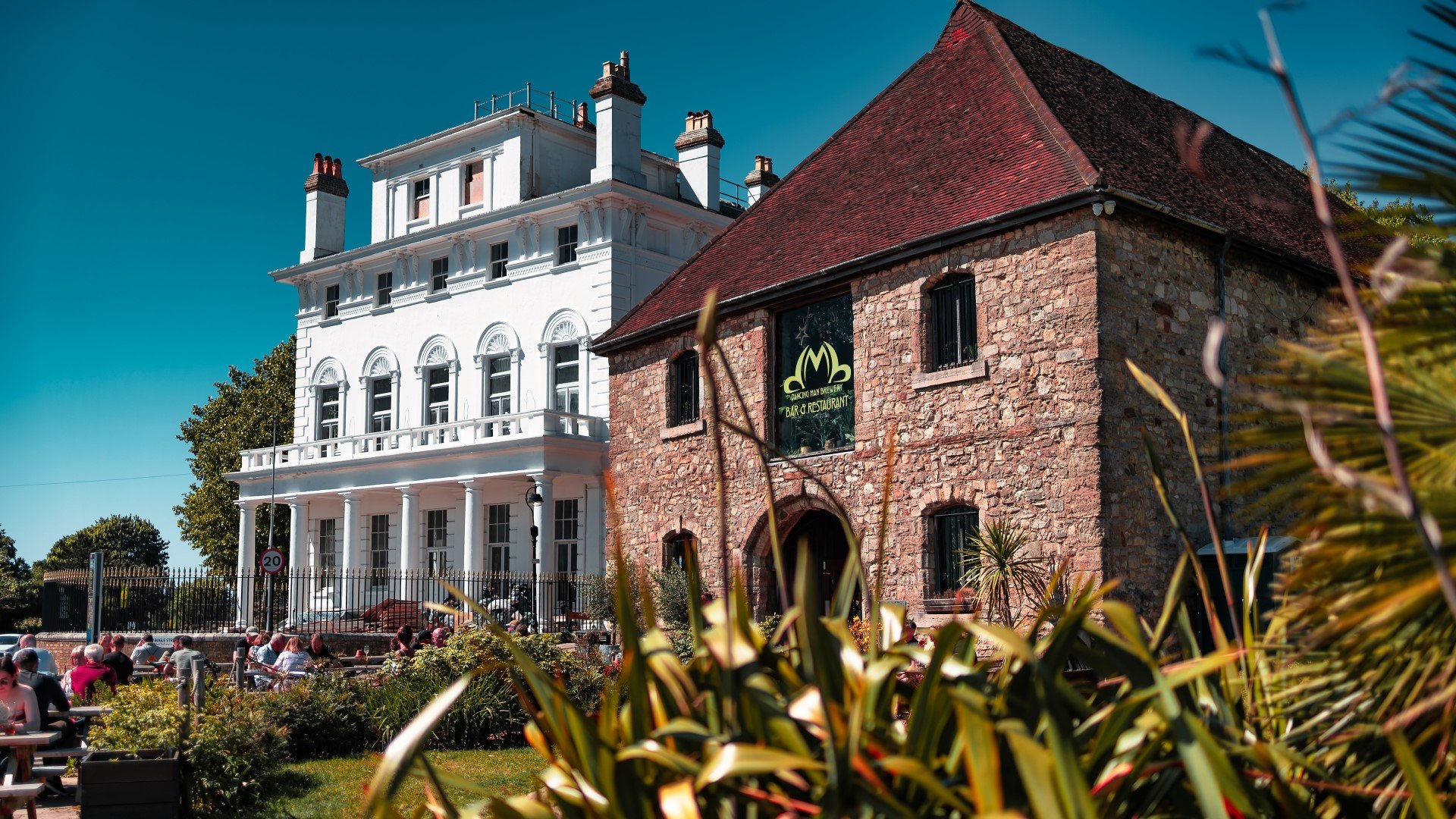
After exploring Tudor House, turn right and stroll down Bugle Street until you reach the Dancing Man Brewery, set inside a 14th century warehouse known as The Wool House. The two storey building has played an important role in Southampton’s maritime history, originally serving as a wool storage facility and later as a prison, aviation works, and maritime museum. Now a vibrant brewery offering a mouth-watering menu, there’s no better spot to wait for your return ferry than with a perfectly poured pint brewed in-house overlooking the old Royal Pier Pavilion building (now Royal Palace Restaurant) and the former Royal Southern Yacht Club (now The Bugle House). From the Dancing Man, your ferry links from Southampton to the Isle of Wight are just a short stroll away.
For more Island inspiration, see our Explore section.
Find Ways To Save.
Book your ferry travel to the Isle of Wight today!


